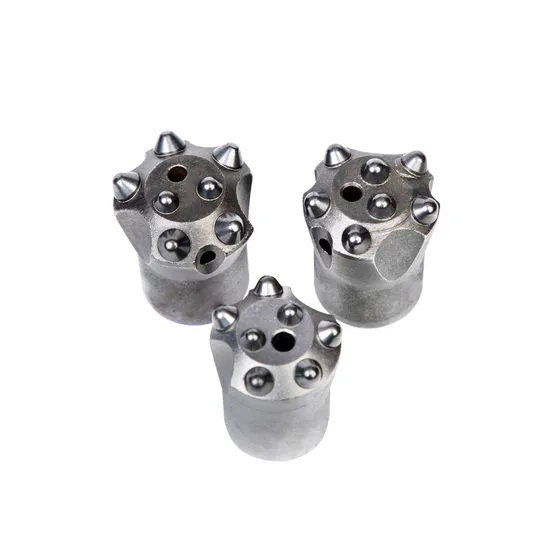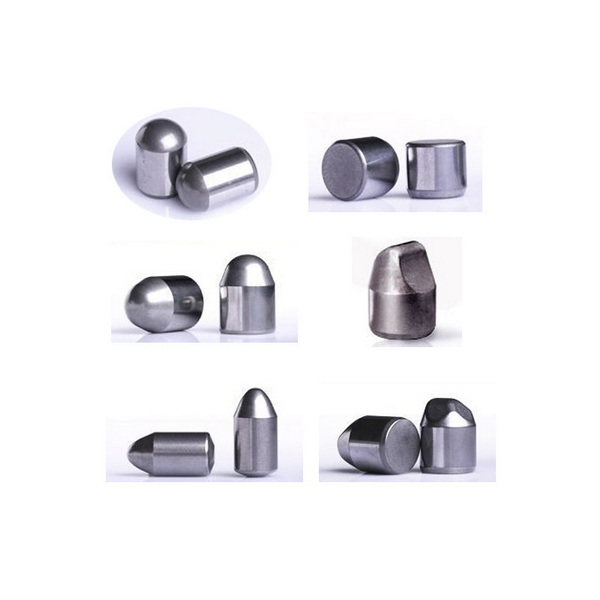Content Menu
● Introduction to Tungsten Carbide
● Historical Development of Tungsten Carbide
>> Early Discoveries
>> The Advent of Cemented Carbides
>> Modern Advancements
● Atomic and Crystal Structure of Tungsten Carbide
>> Hexagonal and Cubic Forms
>> Hexagonal Structure in Depth
>> Cubic Structure in Depth
● Physical Properties Linked to Structure
● Synthesis of Tungsten Carbide
>> Raw Materials
>> Production Methods
● Applications Rooted in Structure
>> Industrial Cutting Tools
>> Aerospace and Defense
>> Medical Devices
>> Consumer Products
>> Energy Sector
● Advanced Structural Modifications
>> Nanostructured Tungsten Carbide
>> Composite Materials
>> Surface Coatings
● Environmental and Economic Considerations
>> Recycling Challenges
>> Sustainability Initiatives
>> Market Trends
● Future Directions in Tungsten Carbide Research
● Conclusion
● FAQ: Tungsten Carbide Structure and Properties
>> 1. What is the most common crystal structure of tungsten carbide?
>> 2. How does the structure of tungsten carbide affect its hardness?
>> 3. What is the difference between hexagonal and cubic tungsten carbide?
>> 4. Why is cobalt added to tungsten carbide?
>> 5. Can tungsten carbide be 3D printed?
Tungsten carbide stands as one of the most remarkable materials in modern engineering, celebrated for its exceptional hardness, durability, and resistance to extreme environments. Its unique structure is the foundation of these properties, making it indispensable in industries ranging from machining and mining to jewelry and aerospace. This article explores the intricate structure of tungsten carbide, delving into its atomic arrangement, physical characteristics, synthesis methods, historical development, environmental considerations, and the wide array of applications that rely on its robust nature.

Introduction to Tungsten Carbide
Tungsten carbide (WC) is a compound composed of tungsten and carbon atoms. Its chemical formula is WC, and it is renowned for its immense hardness-second only to diamond and a select few other materials. The combination of tungsten's high atomic weight and carbon's strong covalent bonding results in a material that is not only hard but also dense, thermally stable, and chemically inert. First synthesized in the late 19th century, tungsten carbide has evolved into a cornerstone of industrial innovation, with its structure serving as the blueprint for its unparalleled performance.
Historical Development of Tungsten Carbide
Early Discoveries
The journey of tungsten carbide began in 1893 when French chemist Henri Moissan produced the compound while experimenting with high-temperature reactions. However, early versions were brittle and impractical for industrial use.
The Advent of Cemented Carbides
In the 1920s, German scientists at Osram and Krupp developed *cemented carbides* by combining tungsten carbide powder with metallic binders like cobalt. This innovation addressed brittleness, paving the way for its use in cutting tools and wear-resistant components.
Modern Advancements
Today, advancements in nanotechnology and powder metallurgy have enabled the production of ultrafine-grained tungsten carbide, further enhancing its mechanical properties and expanding its applications.
Atomic and Crystal Structure of Tungsten Carbide
Hexagonal and Cubic Forms
Tungsten carbide primarily exists in two crystalline forms:
1. Hexagonal Structure (α-WC):
- The most stable and prevalent form at ambient conditions.
- Features a hexagonal lattice where tungsten (W) and carbon (C) atoms are arranged in alternating layers.
- Carbon atoms occupy half of the trigonal prismatic interstices within the tungsten lattice.
2. Cubic Structure (β-WC):
- Forms at high temperatures (above 2500°C).
- Adopts a rock salt-like structure, similar to sodium chloride (NaCl).
- Each tungsten atom is octahedrally coordinated with six carbon atoms.
Hexagonal Structure in Depth
The hexagonal lattice of α-WC is characterized by:
- Layer Stacking: Tungsten atoms form close-packed layers, with carbon atoms nestled in specific interlayer gaps.
- Coordination Geometry: Each tungsten atom is surrounded by six carbon atoms in a trigonal prismatic arrangement, and vice versa.
- Bond Characteristics: The W-C bonds are short (220 pm) and highly covalent, contributing to the material's rigidity.
Key Structural Parameters:
- W-W intra-layer distance: ~291 pm
- W-W inter-layer distance: ~284 pm
- W-C bond length: ~220 pm
This dense, tightly bonded structure resists dislocation movement, making deformation nearly impossible under normal conditions.
Cubic Structure in Depth
The cubic phase of β-WC is less common but significant in high-temperature applications:
- Coordination: Each atom is octahedrally coordinated, with six neighbors of the opposite element.
- Stability: This phase is metastable at room temperature but can persist if rapidly cooled.

Physical Properties Linked to Structure
The atomic arrangement of tungsten carbide directly dictates its physical behavior:
| Property | Value/Description | Structural Basis |
| Hardness | 9–9.5 Mohs, ~2600 HV | Strong covalent bonds and dense lattice |
| Density | 15.6 g/cm³ | High atomic weight of tungsten |
| Melting Point | 2870°C | Strong interatomic bonding |
| Thermal Conductivity | 110 W/(m·K) | Efficient phonon transport in lattice |
| Electrical Conductivity | Low resistivity (~2×10⁻⁷ Ω·m) | Metallic bonding characteristics |
| Chemical Resistance | Inert to acids and oxidizers | Stable covalent network |
Synthesis of Tungsten Carbide
Raw Materials
- Tungsten Sources: Tungsten oxide (WO₃) or ammonium paratungstate.
- Carbon Sources: Graphite, carbon black, or methane.
Production Methods
1. Direct Carburization:
- Tungsten powder is heated with carbon at 1400–2000°C in a hydrogen atmosphere.
- Reaction: W + C → WC
- Produces coarse-grained WC suitable for cutting tools.
2. Chemical Vapor Deposition (CVD):
- Tungsten hexafluoride (WF₆) reacts with methane (CH₄) at 500–1000°C.
- Reaction: WF₆ + CH₄ → WC + 6HF
- Yields high-purity, nanocrystalline WC for coatings.
3. Mechanical Alloying:
- Ball milling of tungsten and carbon powders to achieve nanoscale mixing.
- Subsequent annealing forms ultrafine WC grains.
4. Cemented Carbide Production:
- WC powder is mixed with 3–20% cobalt binder.
- Pressed into shape and sintered at 1300–1500°C.
Applications Rooted in Structure
Industrial Cutting Tools
- Drill Bits and Inserts: WC's hardness allows machining of hardened steels and superalloys.
- Mining Tools: Crusher rolls, picks, and tunnel boring machines leverage WC's wear resistance.
Aerospace and Defense
- Rocket Nozzles: Withstands extreme temperatures and erosion from exhaust gases.
- Armor-Piercing Ammunition: WC cores enhance penetration capability.
Medical Devices
- Surgical Scalpels: Sharper and longer-lasting than stainless steel.
- Dental Burrs: Efficiently cut bone and enamel without dulling.
Consumer Products
- Jewelry: Scratch-resistant wedding bands and luxury watch components.
- Sports Equipment: Golf club inserts and fishing gear guides.
Energy Sector
- Oil and Gas Drilling: WC-coated components endure abrasive geological formations.
- Nuclear Reactors: Used in control rods and radiation shielding.
Advanced Structural Modifications
Nanostructured Tungsten Carbide
- Grain Size Reduction: Nanocrystalline WC (grain size <100 nm) exhibits superior hardness (up to 3000 HV) and fracture toughness.
- Synthesis Challenges: Requires precise control of temperature and carbon stoichiometry to prevent grain growth.
Composite Materials
- WC-Co Composites: Cobalt binder (6–12%) improves toughness without sacrificing hardness.
- WC-TiC-TaC Alloys: Additives enhance high-temperature performance for metal cutting.
Surface Coatings
- CVD and PVD Coatings: Thin WC layers (5–20 μm) applied to substrates for wear protection.
- Functionally Graded Materials: Gradual transition from WC-rich surface to tough metallic core.
Environmental and Economic Considerations
Recycling Challenges
- Cemented Carbide Recycling: Up to 40% of global WC supply comes from recycled scrap.
- Processes: Zinc recovery, acid leaching, and direct re-use in powder metallurgy.
Sustainability Initiatives
- Reducing Cobalt Use: Research into nickel or iron binders to address cobalt's toxicity and cost.
- Energy-Efficient Synthesis: Microwave sintering and plasma-assisted methods lower energy consumption.
Market Trends
- Global Demand: Projected to grow at 5.8% CAGR (2023–2030), driven by mining and automotive sectors.
- Regional Production: China dominates raw WC production, while Europe leads in advanced composites.
Future Directions in Tungsten Carbide Research
1. Additive Manufacturing:
- 3D printing of complex WC components via binder jetting or laser powder bed fusion.
2. High-Entropy Carbides:
- Multi-element carbides (e.g., W-Ti-Ta-Nb-C) for ultrahigh-temperature stability.
3. Biomedical Innovations:
- Porous WC scaffolds for bone implants and antimicrobial coatings.
4. Quantum Applications:
- Exploration of WC's electronic properties for spintronics and superconductivity.
Conclusion
Tungsten carbide's structure is the cornerstone of its extraordinary properties. The hexagonal lattice, characterized by strong tungsten-carbon bonds and trigonal prismatic coordination, imparts exceptional hardness and durability. The existence of a cubic phase at high temperatures further broadens its utility in specialized environments. From industrial machining to jewelry, the atomic architecture of tungsten carbide ensures its continued relevance in technology and manufacturing. As research advances in nanotechnology, additive manufacturing, and sustainable production, this century-old material continues to redefine the boundaries of materials science. Understanding its structure not only explains its physical properties but also guides the development of new applications and advanced composites that will shape industries for decades to come.

FAQ: Tungsten Carbide Structure and Properties
1. What is the most common crystal structure of tungsten carbide?
The most common crystal structure is hexagonal (α-WC), where tungsten and carbon atoms form a tightly bonded lattice with trigonal prismatic coordination.
2. How does the structure of tungsten carbide affect its hardness?
The short, strong covalent bonds between tungsten and carbon atoms, combined with the dense hexagonal packing, create a rigid lattice that resists deformation, resulting in exceptional hardness.
3. What is the difference between hexagonal and cubic tungsten carbide?
Hexagonal WC is stable at room temperature and used in cutting tools, while cubic WC forms at high temperatures and has a rock salt structure suited for specialized high-temperature applications.
4. Why is cobalt added to tungsten carbide?
Cobalt acts as a metallic binder, filling gaps between WC grains to improve toughness and prevent fracture, creating a composite material known as cemented carbide.
5. Can tungsten carbide be 3D printed?
Yes, emerging techniques like binder jetting and laser powder bed fusion enable 3D printing of complex WC parts, though post-processing sintering is required to achieve full density.
















